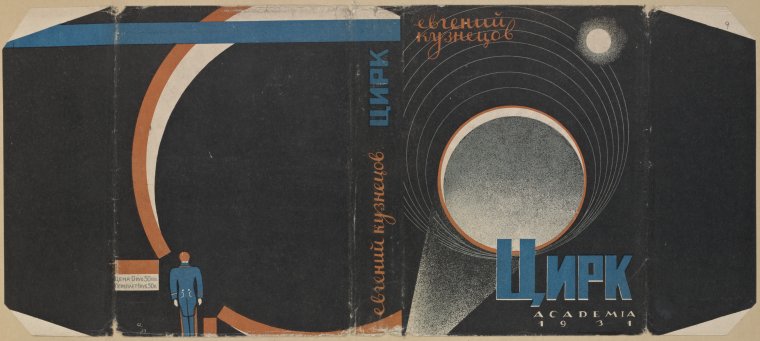Before a Soviet-era spacecraft intended for Venuscrashed back to Earth over the weekend,Movies German astronomers watched it tumble through space.
As Kosmos 482took its last laps, a German radar station spotted the uncrewed landing capsule passing over its antenna. The station, the Fraunhofer Institute for High Frequency Physics and Radar Techniques FHR, has combined its observations with an image of a similar capsule to show the spacecraft's orientation and features in the radar reflection.
The data, presented as a GIF farther down in this story, helped the European Space Agency track the probein its final hours, though its final resting place — most likely a watery grave — is still unknown.
If it indeed plunged into the Indian Ocean as some computer simulations have suggested, "only the whales and albatross saw it," said Dutch scientist Marco Langbroek in a poston X.
SEE ALSO: Stunning video reveals Jupiter's roiling auroras. See it now. A predecessor to the lost Soviet spacecraft, either the Venera 5 or Venera 6 capsule, is being prepared for launch in January 1969, in this still image taken from the film "The Storming of Venus." Credit: Sovfoto / Universal Images Group / Getty Images
A predecessor to the lost Soviet spacecraft, either the Venera 5 or Venera 6 capsule, is being prepared for launch in January 1969, in this still image taken from the film "The Storming of Venus." Credit: Sovfoto / Universal Images Group / Getty Images The Venera mission, which launched from Kazakhstan on March 31, 1972, failed long before the Soviet Union could attempt to touch down on Venus. Because of a propulsion problem, it never escaped Earth's orbit. A half-century later, the landing capsule was predicted to reenterthe atmosphere. That day arrived on Saturday, May 10.
Space debris and expired satellites often fall back to Earth inconsequentially, mostly burning up on the way down. Whatever survives often plummets into an ocean, never to be found.
This anticipated-yet-uncontrolled reentry was to be exceptional, though: It grabbed the attention of researchers and military officials because of its potential to survive the journey mostly intact. After all, the 1,000-pound spacecraft was built to withstand the harsh environment of an alien planet — the hottest in the solar system, in fact. Venus' climatecould melt lead, and the atmospheric pressure is 75 times that of Earth.
This Tweet is currently unavailable. It might be loading or has been removed.
Watch the GIF of the tumbling Soviet spacecraft in the above X post. Credit: Fraunhofer FHR
Fraunhofer FHR was likely the last to see Kosmos 482. It passed about 62 miles overhead on May 10, at 8:04 a.m. CEST, according to the station. When the object was not detected again one orbit later, at 9:32 a.m. CEST, researchers reasonably assumed the landing or splashdown occurred between those two times.
A tracking and imaging radar like the one used by the German station is a way to observe space, but it's not a telescope. It uses radio waves instead of light to study objects, such as satellites, debris, and meteors.
Exactly where and when this Cold War space race relic died is unclear, as it seems there were no eyewitnesses to the fall. The Russian Space Agency Roscosmossaid it plummeted over the Indian Ocean, west of Jakarta, Indonesia, at 9:24 a.m. Moscow time, according to a Telegram post, and NASAappears to be accepting of that data. Other reports, some based on earlier predictions, varied.
The U.S. Space Command, which tracks reentering space objects, has not confirmed any reports or provided its own data on Kosmos 482. An information request from Mashable wasn't answered Tuesday.
 Staff Picks: Continentals, Cocoons, Comics by The Paris Review
Staff Picks: Continentals, Cocoons, Comics by The Paris Review
 Say “I Love You” With Our Special Valentine’s Day Box Set
Say “I Love You” With Our Special Valentine’s Day Box Set
 C. D. Wright, 1949–2016; Read Her Poem “Our Dust”
C. D. Wright, 1949–2016; Read Her Poem “Our Dust”
 Philips now allows customers to 3D print replacement parts
Philips now allows customers to 3D print replacement parts
 WTF? Can we talk about HP's wacky new foldable laptop for a sec?
WTF? Can we talk about HP's wacky new foldable laptop for a sec?
 Remember the Oddity That Was “Closed on Account of Rabies”?
Remember the Oddity That Was “Closed on Account of Rabies”?
 Russian Book Jackets from the 1930s
Russian Book Jackets from the 1930s
 I’m a Windows stan, but I just switched to a MacBook – 3 reasons I’m never going back
I’m a Windows stan, but I just switched to a MacBook – 3 reasons I’m never going back
 NYT Connections Sports Edition hints and answers for May 19: Tips to solve Connections #238
NYT Connections Sports Edition hints and answers for May 19: Tips to solve Connections #238
 Best Prime Day noise
Best Prime Day noise
 Staff Picks: Continentals, Cocoons, Comics by The Paris Review
Staff Picks: Continentals, Cocoons, Comics by The Paris Review
 Remember the Oddity That Was “Closed on Account of Rabies”?
Remember the Oddity That Was “Closed on Account of Rabies”?
 Operation Mensch
Operation Mensch
 What Belongs to You: An Interview with Garth Greenwell
What Belongs to You: An Interview with Garth Greenwell
 Doddering Old Men: On Henry de Montherlant’s “The Bachelors”
Doddering Old Men: On Henry de Montherlant’s “The Bachelors”
 Prime Day Vitamix deal: Save over $200 on Amazon
Prime Day Vitamix deal: Save over $200 on Amazon
 NYT mini crossword answers for May 12, 2025
NYT mini crossword answers for May 12, 2025
 'What did green ever do to them?' Samsung joins Google in shaming Apple for iMessage
'What did green ever do to them?' Samsung joins Google in shaming Apple for iMessage
Google rolls out AR versions of Simone Biles, Megan Rapinoe, and Naomi Osaka in searchGoogle IO 2021: Google Docs is getting emoji reactionsGoogle rolls out AR versions of Simone Biles, Megan Rapinoe, and Naomi Osaka in searchGoogle IO 2021: Google Docs is getting emoji reactionsFlush with bitcoin, hacker group behind Colonial Pipeline attack says it's doneVenmo is pausing some payments being sent to Palestinian relief fundsGoogle IO 2021: Unlock BMW cars with Android's digital car keyOculus Quest headsets can display iOS push notifications nowRemember when Matthew Morrison f*cked a sheep on 'Younger'?Family getting you down? Check out these dogs watching the National Dog Show.Chrissy Teigen roasted Animal Crossing: Pocket Camp in new tweet stormGoogle employees demand Palestine support in letter to CEOOtter's assistant can automatically transcribe Zoom meetingsGabby Douglas reveals that she, too, was abused by Olympic team doctorHubble photo shows cosmic cloud making its very own bright lightColonial Pipeline reportedly paid millions for slowSee the colossal James Webb space telescope unfurl its huge mirrorsBehind the moving pop songs of Apple TV+'s 'Trying': InterviewMaisie Williams launches film club podcast with friendsBezos unleashed: 7 things we learned from 'Amazon Unbound' The Making of a Comics Biography, Part 2 James Dickey on Truman Capote Temple Tomb Fortress Ruin: Paintings by John Wellington WhatsApp under fire for AI Asus ROG Ally deal: Save $80 at Best Buy Meta has its own version of TikTok's Discover List How Studying the Enneagram Can Expand One’s Empathy Our Gilded Coonskin: Embracing Vulgar Art to Fight Trumpism Staff Picks: Vivek Shanbhag, Alma Thomas, Leila Guerriero, and More Black Friday Xbox deals 2023: Save on 'Assassin's Creed' franchise, more A New Documentary Looks at the Alley Cats of Istanbul Harry Mathews, 1930–2017 NYT's The Mini crossword answers for November 5 Air fryer mozzarella sticks are tasty and easy to make: Here's the recipe 'Quordle' today: See each 'Quordle' answer and hints for November 6, 2023 Wordle today: The answer and hints for November 6 How the 12 What is queerbaiting? And is it ever OK to use the term? Land Art for Sale: Buying and Selling Robert Smithson The Making of a Comics Biography, Part 3